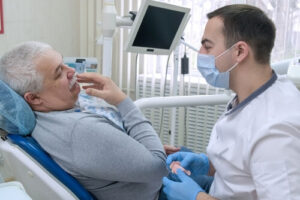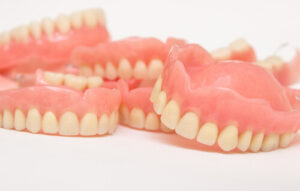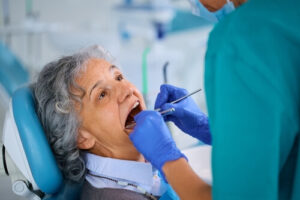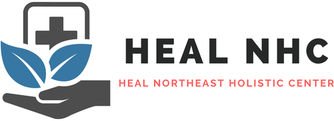How to Remove Denture Adhesive from Gums: A Step-by-Step Guide
If you’re a denture wearer, you know the challenge of removing stubborn denture adhesive from your gums at the end of the day. While the adhesive provides the necessary hold for your various dentures in place throughout, it can leave behind a frustrating residue. This article will explore safe and effective methods for removing denture adhesive from gums, ensuring comfort, and maintaining oral hygiene.
Stay tuned as we reveal techniques to help you handle adhesive residue without hassle.
Understanding the Challenge of Denture Adhesive Removal
Removing denture adhesive can be a significant challenge for many denture wearers. Adhesive is designed to hold dentures firmly in place, providing confidence and comfort throughout the day. However, the very qualities that make it effective also make it difficult to remove from both the dentures and the gums, leading to potential issues if not managed properly.
Challenges of Denture Adhesive Removal
- Residue Buildup: Denture adhesive can leave behind a sticky residue on the gums and dentures. This residue can be tough to clean and may accumulate over time if not thoroughly removed, potentially leading to discomfort and hygiene issues.
- Gum Irritation: If adhesive is not fully removed from the gums, it can cause irritation and soreness. This residue can trap bacteria against the soft tissues, increasing the risk of infections and other oral health complications.
- Denture Care: Cleaning adhesive off dentures without damaging them is another challenge. Inadequate cleaning can shorten the lifespan of the dentures, affect their fit, and compromise oral health.
- Time and Effort: Properly removing adhesive requires time and effort, which can be inconvenient for some individuals, especially those with limited dexterity or other health issues.
Effective Techniques for Adhesive Removal
- Soaking and Rinsing: Soaking dentures in a specialized denture cleaning solution can help loosen the adhesive, making it easier to wipe away. Regular rinsing under warm water after meals can also minimize residue buildup.
- Soft Brushes and Cloths: Using a soft-bristled brush or a gentle cloth can effectively remove adhesive residues from both dentures and gums without causing irritation.
- Proper Products: Utilizing products specifically designed for denture cleaning, such as non-abrasive cleaners and adhesive removers, ensures that the adhesive is effectively removed without damaging the dentures.
- Regular Dental Checkups: Regular visits to a dental health professional can help address any issues related to denture fit and adhesive use, ensuring that the dentures remain secure and comfortable with minimal adhesive use.
Why It’s Important to Remove Denture Adhesive Properly

Removing denture adhesive properly is crucial for sustaining good oral hygiene and making sure the health of both your dentures and gums. Proper removal of dentures and adhesive pads involves several key benefits:
Prevents Buildup of Bacteria
Denture adhesives can trap food particles and bacteria against the gums and within the denture. Over time, this can cause bacterial growth and potentially cause infections or gum disease. Regularly and thoroughly cleaning away old adhesive helps minimize this risk.
Maintains Gum Health
Residual adhesive left on the gums can irritate and damage delicate oral tissues. Removing adhesive completely daily helps prevent irritation, soreness, and inflammation, ensuring the gums remain healthy.
Enhances Denture Fit
By cleaning off old adhesives, you help maintain the optimal fit of your dentures. Accumulated adhesive residue can alter the fit, making dentures loose or uncomfortable. A clean denture base improves suction and fit, enhancing comfort and functionality.
Improves Overall Comfort
Removing adhesive residue maintains hygiene and enhances the comfort of wearing dentures. It prevents the gritty or sticky feeling from leftover adhesive, giving a more pleasant experience when you wear dentures.
Aids in Regular Inspection
Regular adhesive removal allows one to inspect dentures and oral tissues for signs of wear, damage, or health issues that might go unnoticed.
Step-by-Step Guide: Effective Techniques for Removing Adhesive

Removing denture adhesive effectively requires a careful approach to ensure complete removal without irritating the gums. Here’s a step-by-step guide to help you efficiently and safely clean away denture adhesive:
Remove Your Dentures: Begin by gently removing your dentures. If they feel snug, use a rocking motion to ease them out.
Rinse Dentures: Hold the dentures under warm running water to loosen and wash away some of the adhesive. This initial rinse helps remove larger particles of food and adhesive.
Clean Dentures with a Soft Brush: Use a soft-bristled denture brush or a soft toothbrush to clean the surfaces of your dentures. Avoid using regular toothpaste as it can be abrasive; use a cleaner specifically designed for dentures. Gently brush all areas to remove any remaining adhesive and food particles.
Soak Dentures: Place the dentures in a cleaning solution specifically formulated for dentures overnight. This helps to disinfect them and loosen any remaining adhesive residues.
Rinse and Dry Dentures: After soaking, rinse your dentures under warm water again and dry them with a clean, soft cloth.
Clean Your Gums and Mouth: After removing the dentures, it’s important to clean your mouth to remove any adhesive residue from your gums. Use a soft toothbrush or gauze to wipe your gums, palate, and natural teeth gently. You can also use a mild mouthwash or saline solution to rinse your mouth, which can help remove any remaining adhesive and soothe the gum tissues.
Check for Residue: After cleaning, check your dentures and gums for any remaining adhesive. If you find any residue, gently brush it or wipe it away.
Apply Fresh Adhesive: If you use denture adhesive daily, apply a small amount to your clean, dry dentures before wearing them again. Follow the manufacturer’s instructions for applying adhesive to ensure you don’t use too much, which can lead to excess buildup.
Recommended Products and Tools for Cleaning Denture Adhesive

Using the right products and tools is essential to effectively remove denture adhesive and maintain both the health of your dentures and your oral hygiene. Here’s a list of recommended items that can help you keep your dentures clean and free of adhesive residues:
- Denture Adhesive Remover: Some brands offer specific products designed to dissolve denture adhesive, making it easier to clean off the dentures and your gums. These can be especially helpful if adhesive tends to stick stubbornly.
- Soft-Bristled Denture Brush: A soft-bristled denture brush is gentler on dentures than a regular toothbrush. It is designed to effectively clean without scratching the surface, which could harbor bacteria.
- Non-Abrasive Denture Cleaner: Regular toothpaste can be too harsh for cleaning dentures. Use a non-abrasive denture cleaner specifically formulated for safely cleaning dentures without damaging them.
- Denture Soaking Solution: When used overnight, a soaking solution can help loosen adhesive and disinfect dentures. Ensure the solution is compatible with the type of dentures you have, as some materials may have specific requirements.
- Gauze or Soft Cloth: Soft gauze or a cloth can gently wipe the remaining adhesive from your gums. This can be less irritating than a toothbrush if your gums are sensitive.
- Mild Mouthwash or Saline Solution: Rinsing with a mild, alcohol-free mouthwash or saline solution can help remove any remaining adhesive particles from your mouth and soothe gum tissues after you clean your dentures.
- Denture Adhesive Wipes: These are pre-moistened wipes designed to remove denture adhesive from dentures and gums. They can be a convenient option for those who need a quick and easy solution.
Tips for Preventing Excessive Adhesive Buildup

Excessive adhesive buildup on dentures can be frustrating and uncomfortable for most denture wearers, but it can be prevented with the right practices and awareness. Here are some useful tips to help you minimize or remove adhesive from buildup and maintain optimal denture care:
- Apply Adhesive Sparingly: Use only a small amount of denture adhesive as the product instructions recommend. Applying more adhesive than necessary does not improve stability and can lead to difficult-to-remove buildup.
- Proper Denture Fit: Ensure your dentures fit properly. Poorly fitting dentures often cause people to overuse adhesive to achieve a secure fit. If your dentures feel loose or uncomfortable, seek advice from your dentist. Properly fitted dentures minimize the need for excessive adhesive.
- Clean Dentures Daily: Thoroughly clean your dentures every night. Removing the adhesive completely each day prevents buildup. Use a denture brush and a recommended cleaning solution or paste designed for dentures. Avoid using regular toothpaste, which can be abrasive.
- Soak Dentures Overnight: Soaking dentures in a cleansing solution can help loosen and dissolve adhesive, making it easier to clean off the next morning. Ensure the soaking solution is suitable for your type of dentures.
- Rinse After Meals: Rinsing your mouth and dentures after meals can help get rid of food particles and any loose adhesive, reducing the temptation to reapply more adhesive than necessary.
- Regular Dental Check-Ups: Visit your dental health professional at ADC Campbelltown Dental Care regularly to make sure your dentures continue to fit well and that your mouth is healthy. Adjustments may be necessary over time as your mouth’s shape changes.
- Use Correct Adhesive Techniques: Follow the manufacturer’s instructions for applying denture adhesive. Typically, this involves applying small dots or strips along the denture, avoiding edges close to the gums. This technique helps control the amount used and ensures it is applied where most effective.
- Educate Yourself on Alternatives: If you consistently rely on large amounts of adhesive, discuss alternative options with your dentist, such as denture relining, implants, or new dentures.
In conclusion, knowing how to effectively remove the remaining denture glue and adhesive from gums is crucial for maintaining optimal oral hygiene and comfort. Following the right techniques and using appropriate products ensures that your gums remain healthy and free from adhesive residue. Regular and proper cleaning not only extends the life of your dentures but also contributes to overall dental health. Remember, a little care goes a long way in keeping your smile secure and comfortable.
References
4 Easy Ways to Remove Denture Adhesive
https://eurodenture.com/blog/how-to-remove-denture-adhesive/
Technique for Denture Adhesive Removal
https://www.dentalcare.com/en-us/ce-courses/ce360/technique-for-denture-adhesive-removal
Removal of denture adhesives from PMMA and Polyamide denture base materials – PMC
https://www.ncbi.nlm.nih.gov/pmc/articles/PMC8007087/
Best Way To Remove Denture Adhesive
https://www.healthcarebusinesstoday.com/best-way-to-remove-denture-adhesive/
Denture Adhesives: A Guide for Patients
http://www.med.umich.edu/1libr/Dentistry/DentureAdhesives.pdf

